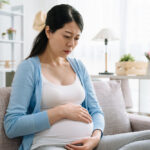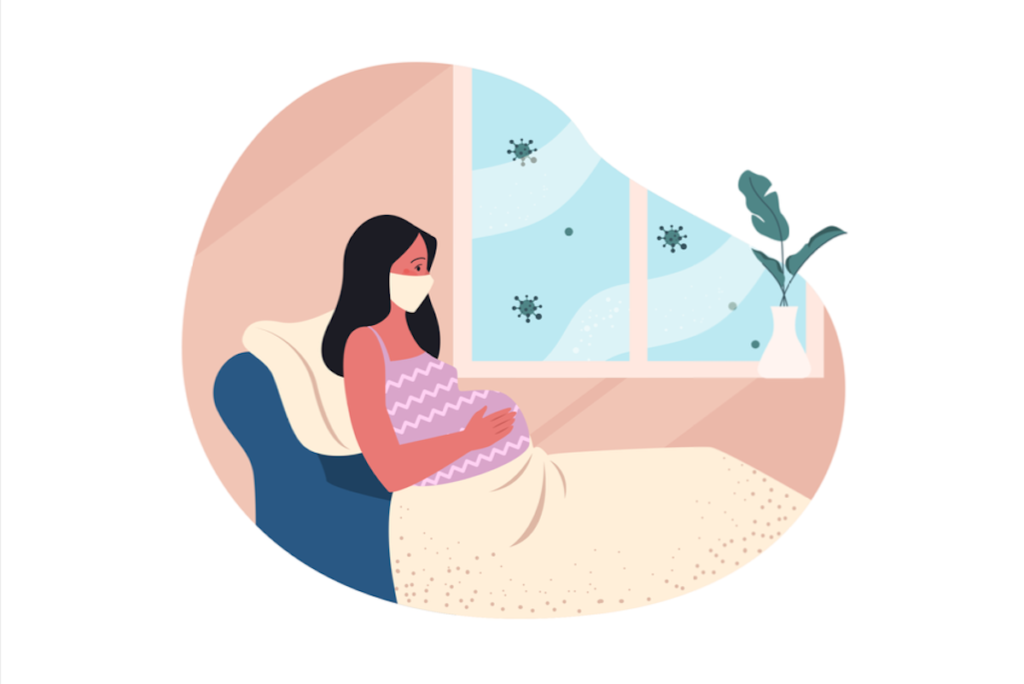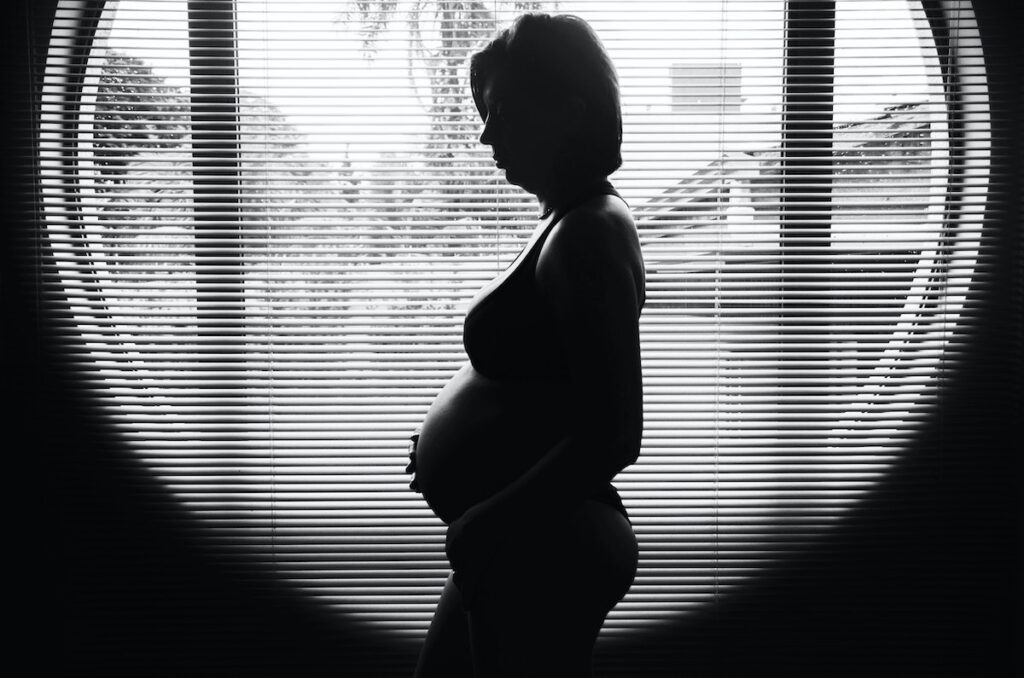
Things changed significantly during the coronavirus pandemic for pregnant women. Firstly, they were classed as “vulnerable” and were therefore advised to only go out for essentials, such as groceries, exercise and antenatal appointments. Measures were also taken with regards to healthcare contact for pregnant women with online midwife appointments, changes to birth plans and new regulations to attend scans alone.
A recent cohort study from the Nuffield Department of Population Health suggests that pregnant women are no more likely to become ill with severe COVID-19 than non-pregnant women and that the majority of women who become severely ill are in their third trimester of pregnancy (Knight et al., 2020). Thus, government advised that women in their third trimester should be particularly attentive to the measures. The pandemic and classification as “vulnerable” being around other potential stressors for pregnant women, such as anxiety about the future, possibility of illness, stress from new routines, financial difficulties and unemployment. Research suggests that a lack of social support and negative life stressors are major risk factors for both antenatal and postnatal depression (Howard et al., 2014).
It is estimated that between 3-5 pregnant women out of 100 experience depression at any one point in time (Gavin et al., 2005). With the changes related to the pandemic, there is reason to hypothesise that prevalence could increase. Since perinatal depression is associated with risks for children’s development (Kingston & Tough, 2014), it is important to ask the question: are there repercussions of the coronavirus pandemic on maternal mental health?

Less social activity, changes to healthcare and stress around the pandemic: are these changes influencing rates of depressive symptoms in pregnant women?
Methods
A recent Chinese study was a cross-sectional analysis of primary data. Women in their third trimester of pregnancy were recruited during regular clinic appointments across 25 hospitals in China. The participants were split into 2 groups based on whether their assessment was before or after 20th January (the day human-to-human transmission of COVID-19 was first reported).
Depression was measured using the Edinburgh Postnatal Depression Scale (EPDS), a self-report in which each item is rated on a 4-point scale from 0 to 3. For this study, a threshold score of 10 out of 30 was used to define depression. The researchers also collected national data on the daily COVID-19 infection and death rates in China.
Results
The total sample size of this study was 4,124 with:
- 1,285 women were assessed after the coronavirus public announcement
- 2,839 women were assessed before the announcement.
Compared to those assessed before the announcement, pregnant women who were assessed after the announcement:
- Had significantly higher rates of depression as reported by the EPDS (26.0% vs 29.6%)
- Were more likely to endorse the thoughts of self-harm measure on the EPDS.
However, when the higher cut-off score of 13 on the EPDS was used, no significant differences were detected between the groups.
The researchers also correlated data of COVID-19 death and infection rates and indicated that both were positively associated with women meeting the EPDS cut-off, and having higher EPDS scores.
Across both groups, the study suggested that women were likely to score higher on the EPDS if they were:
- Underweight pre-pregnancy
- Giving birth for the first time
- Living in a space less than or equal to 20 m²
- Exercising less than 7 hours per week
- Younger than 35
- In full-time employment.

This recent Chinese study finds that depressive symptoms reported by women in the perinatal period increased during the coronavirus pandemic.
Conclusions
In conclusion, the authors indicated that the announcement of coronavirus human-to-human transmission in China increased levels of depressive symptoms in pregnant women, especially with regards to thoughts of self-harm.
When the researchers correlated their EPDS data with national data on COVID-19 infection and death rates, they presented that levels of depressive symptoms increased as the infection and death rates increased.
The study also identified several risk factors that were associated with higher levels of depressive symptoms throughout the study period, such as being pregnant for the first time.

This Chinese research suggests that the announcement of coronavirus transmission is linked with an increase in depression in pregnant women, especially in those with thoughts of self-harm.
Strengths and limitations
This research team used their opportunistic sample of women pre-registered on a Chinese perinatal data system to better understand how the coronavirus pandemic is impacting pregnant women. This team should, therefore, be praised for their timely efforts. The sample from this system consists of data from 10 different regions of China, giving a fairly geographically representative sample. However, since there was a variation in the number of confirmed cases of COVID-19 between these regions, it would have been interesting to see if this influenced rates of depressive symptoms in this study.
Studies related to the pandemic face publication pressure. The EPDS is a quick and easy measure to use, making it an easy and practical tool to assess women’s mood state during their regular medical contact. However, the EPDS is designed to assess depressive symptomatology, not as a proxy for a diagnosis of perinatal depression (Beck, 2001). Consequently, the results on the prevalence of depression should be interpreted with caution. This study used a threshold of 10 on the EPDS which has been recommended to increase sensitivity in community screening (Murray & Carothers, 1990). At this threshold, research has suggested a sensitivity of between 84-100% and a specificity of 82-88% compared to a diagnosis of major postpartum depression through a clinical interview (Harris, Huckle, Thomas, Johns, & Fung, 1989; Murray & Carothers, 1990). This creates uncertainty around the results, as this study interpreted the EPDS results in diagnostic terms and the suggested rates could be higher than the true ones.
Mothers participating in this study only reported on the EPDS and demographic questions, so it is difficult to disentangle what aspects of the coronavirus situation impacted changes in the rates of depressive symptoms. For example, although a lack of exercise was one of the risk factors, it should be noted that this was continuously associated with higher depressive symptoms, regardless of the COVID-19 announcement. In-depth qualitative data would be informative alongside this quantitative dataset to ascertain whether the changes are related to the pandemic. This would be useful to inform global maternal mental health services.

This research suggests that pregnant women in China who were underweight pre-pregnancy, giving birth for the first time, living in a small space, not getting much exercise, younger than 35 and employed full-time, show higher rates of depressive symptoms in their third trimester.
Implications for practice
Many people have found the changes associated with the pandemic tough to manage, while pregnant women are facing the added challenges associated with being classed as “vulnerable.” This research seems to suggest that the announcement of human-to-human transmission of coronavirus in China, and therefore the factors associated with this, have contributed to an increase in depressive symptoms for pregnant women.
Since the study reviewed here was only looking at pregnant women and collected only quantitative data, it will be interesting to see the results of Professor O’Mahen’s study registered on the UK COVID and mental health studies registry, on how COVID-19 has impacted how women experience service delivery and their overall wellbeing.
Despite the small scale of this study, the increase of depressive symptoms among pregnant women is worth considering. During pandemics, pregnant women may need more support and should be provided with resources to help them manage their feelings in times of uncertainty.
In my opinion, this study suggests that pregnant women should be provided with resources to help them manage their feelings during these times. Furthermore, maternity services should be aware of the potential for more women to be having increased thoughts of self-harm, and it should be ensured that staff know what to do if they are concerned. Along with other mental health services, there seems to be a need for more funding to perinatal care due to the pandemic. I believe that funding should be part of the government’s response to coronavirus and mental health should not be overlooked in the way that it so often is.

There is a need to understand what specific aspects of the pandemic are influencing changes in levels of depressive symptoms reported by pregnant women.
Statement of interests
None.
Links
Primary paper
Wu, Y., Zhang, C., Liu, H., Duan, C., Li, C., & Fan, J. et al. (2020). Perinatal depressive and anxiety symptoms of pregnant women during the coronavirus disease 2019 outbreak in China. American Journal Of Obstetrics And Gynecology, 223(2), 240.e1-240.e9.
Other references
Beck, C. T. (2001). Predictors of Postpartum Depression: An Update. Nursing Research, 50(5), 275-285.
Gavin, N. I., Gaynes, B. N., Lohr, K. N., Meltzer-Brody, S., Gartlehner, G., & Swinson, T. (2005). Perinatal depression: a systematic review of prevalence and incidence. Obstet Gynecol, 106(5 Pt 1), 1071-1083. doi:10.1097/01.AOG.0000183597.31630.db
Harris, B., Huckle, P., Thomas, R., Johns, S., & Fung, H. (1989). The use of rating scales to identify post-natal depression. The British Journal of Psychiatry, 154(6), 813-817.
Howard, L. (2020). Perinatal Mental Health & COVID. Presentation, Royal Society.
Howard, L. M., Molyneaux, E., Dennis, C.-L., Rochat, T., Stein, A., & Milgrom, J. (2014). Non-psychotic mental disorders in the perinatal period. The Lancet, 384(9956), 1775-1788.
Kingston, D., & Tough, S. (2014). Prenatal and postnatal maternal mental health and school-age child development: a systematic review. Maternal and child health journal, 18(7), 1728-1741.
Knight, M., Bunch, K., Vousden, N., Morris, E., Simpson, N., Gale, C., . . . Kurinczuk, J. J. (2020). Characteristics and outcomes of pregnant women admitted to hospital with confirmed SARS-CoV-2 infection in UK: national population based cohort study. BMJ, 369, m2107. doi:10.1136/bmj.m2107
Murray, L., & Carothers, A. D. (1990). The validation of the Edinburgh Post-natal Depression Scale on a community sample. The British Journal of Psychiatry, 157(2), 288-290.
O’Mahen, H. (2020). ESMI-II: Effectiveness and cost effectiveness of community perinatal mental health teams. COVID-19 and Mental Health Studies Register. Retrieved 10 July 2020, from https://www.maudsleybrc.nihr.ac.uk/research/covid-19-studies-project-details?id=9057.
Photo credits
- Photo by Kalea Jerielle on Unsplash
- Photo by iMattSmart on Unsplash
- Photo by Camila Cordeiro on Unsplash
